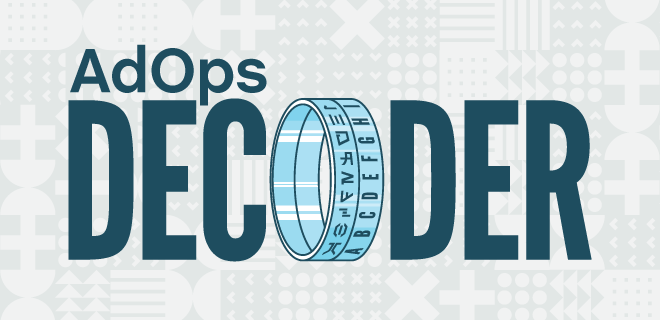
By now, you have been immersed in the value propositions of a data clean room.
The idea of clean rooms is not new — brands have been finding ways to match and collaborate with their data for decades, albeit in a manual and arduous manner. Today’s data clean rooms provide a safer and more secure environment to more easily unite disparate data sets and uncover more business insights than ever before.
While data privacy concerns are a sound reason to get started with a clean room, there are other added benefits, that when choosing the right type of clean room for you, will help your businesses achieve more from your investment in the long term. After all, the ultimate goal of leveraging a clean room is to produce better outcomes for your business.
To achieve better business outcomes, your data clean room must indeed be rooted in privacy protection, but also provide the tools that marketers yearn for in delivering results.
An enhanced clean room with embedded people-based identity, measurement and insights applications and connected with the leading activation channels can help you build deeper partnerships and network your sphere of influence.
What to Look for in an Enhanced Clean Room
So how can you find a clean room that does more — one that helps you deliver better business outcomes, and subsequently, better customer experiences?
Here are some things to keep in mind for your consideration in selecting an enhanced clean room technology:
Must Be Deterministic (Matching)
Enhanced privacy capabilities are often the first reason to gravitate towards a clean room. Privacy enhancing technologies (PETs) enable companies to analyze data without having to expose that data. But the reality is a majority of PETs operate with probabilistic matching.
The debate of probabilistic vs deterministic is not new — and neither is the concept of PETs. But probabilistic matching within a data clean room can be problematic, as it can add noise to the data set, and thereby lead to inaccuracies in matches. Deterministic matching, along with people-based identity can drive scaled and accurate insights key to unlocking value for both parties.
An enhanced data clean room with deterministic matching, powered by people-based identity, ensures you’re able to accurately measure the impact of your marketing campaigns.
In probabilistic matching, a profile of a person and their neighbor may be close enough that both receive the same advertisements.
However, deterministic matching within an enhanced clean room environment further drills down to more exact targeting. Brands are able to see minute differences between the person and their neighbor, leading one to be suppressed from targeting, thereby saving time and money.
An enhanced data clean room with deterministic matching, powered by people-based identity, ensures you’re able to accurately measure the impact of your marketing campaigns.
Leveraging an interoperable identity framework like LiveRamp’s RampID can not only help you measure effectiveness more accurately but also can help drive personalized experiences across omni-channel touchpoints.
Answers the Right Questions
Enhanced or not, a clean room would be moot if it didn’t enable easier data collaboration within the privacy-conscious space. Once the data is accessible, clean rooms should also provide additional capabilities to make collaboration easier and simpler. At LiveRamp, we believe in helping brands collaborate better by :
- Helping build and reconcile their own first-party data sets to support first-party graphs.
- Ensuring brands are bringing data sets into a unified taxonomy to support easy collaboration
- Pre-building queries across data sets to answer key business outcomes questions without heavy lift from both parties.
- Embedding analytics dashboards to ensure granular data can be easily leveraged to create better audiences at scale.
- Embedding measurement protocols to automatically and continuously measure the effectiveness of collaborative campaigns.
Must Be Personable
Data is the key to great customer experiences, and an enhanced data clean room helps unlock those experiences.
Consider a regular real-life occurrence you’ve replayed multiple times: frequenting a local coffee shop. By the first week of near-daily visits, you expect to be given a personalized experience from the coffee shop because they now know your specific preferences for coffee. You may even get a pastry on the house if you are a daily patron.
An enhanced clean room delivers on the ability to create these exceptional customer experiences from insights gleaned from the data clean room.
Data, when leveraged properly in a privacy-safe manner, can do more to enhance the customer experiences, ensuring that brands are able to recognize these customer preferences and deepen relationships with existing customers for enhanced brand loyalty and awareness.
An enhanced clean room delivers on the ability to create these exceptional customer experiences from insights gleaned from the data clean room.
Enhanced Data Clean Rooms Are More Than Just for Retailers
We often think that creating better customer experiences is meant mostly for retailers. But when a major European utilities organization wanted to enhance its customers’ experiences, it turned to an enhanced data clean room technology. Leveraging its first-party data, the company was looking to suppress current customers from its omnichannel campaigns.
By utilizing LiveRamp’s data collaboration for an enhanced clean room, the company was able to suppress current customers from their latest campaign, saving marketing dollars that could then be reinvested back into the media channels to reach a deterministically matched audience for enhanced results.
No matter which type of enhanced data clean room you choose for your data collaboration needs, it’s fundamental to ensure that it will help you deliver the best business outcomes. These outcomes also should not sacrifice the deep customer relationships you seek to grow and solidify as you develop a better understanding of your customers.